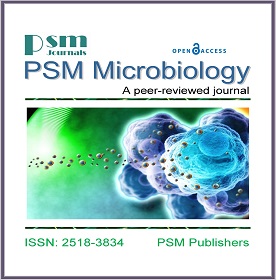Evaluation of Banknote Contamination with Bacteria and Fungi among Falafel Vendors in Ibb City- Yemen
Keywords:
Banknotes Contamination, Infection Outbreak, Bacteria, Fungi, S.aureus, E.coli, Salmonella Spp.Abstract
Money, either in the form of paper notes or coins could be the most broadly handled article by people every day around the world. Banknotes can be contaminated in many ways like the droplets during sneezing, coughing, touching with previously contaminated hands or other articles, and placement on contaminated surfaces. The aim of this study is to isolate and identify microbial contaminating banknotes among falafel vendors in Ibb city, Yemen. A total of 100 samples of the Yemen banknotes (denomination - 1000, 500, 250, 200,100, and 50 Rials), were randomly collected from (Falafel vendors) in Ibb city. All collected currency were examined for total viable bacterial count and identification of pathogenic bacteria and fungi. The results showed that all collected samples (100%) were contaminated with one or more bacteria and fungi species. Our findings showed that the maximum total bacterial count was 240×103 CFU/ml and the minimum was 40×103 CFU/ml. The total coliform ranged from minimum value of 35×103 CFU/ml to maximum value of 171×103 CFU/ml. In this study, the isolated bacteria and fungi were S.aureus (23%), Coagulase Negative Staphylococci (16%), S.pneumoniae (7%), S. pyogenes (2%), B. cereus (18%), L. monocytogenes (3%), E. faecalis (6%), H. influenzae (13%), Salmonella spp (5%) and E.coli (3%), Yeast (10%), Rhizopus (31%), Mucor (24%) and Aspergillus niger (35%). All tested samples in our study were contaminated with many pathogenic and opportunistic bacteria and fungi. This contamination may play an important role in the transmission of infection especially during outbreaks of infectious diseases like COVID-19. Wrong behaviors in dealing with banknotes including licking the fingers with the tongue or wetting them with saliva while counting banknotes, could contaminate them with serious microbes. Due to the unlimited use of banknotes, many people may acquire serious diseases, especially with the reduction of sanitary measures such as washing hands after using currencies, which may reduce the risk of infection with pathogenic microbes. It is recommended that specific antimicrobial agents should be added to the composition of banknotes during its preparation.
Downloads
Published
How to Cite
Issue
Section
License
Copyright (c) 2020 PSM

This work is licensed under a Creative Commons Attribution-NonCommercial 4.0 International License.




